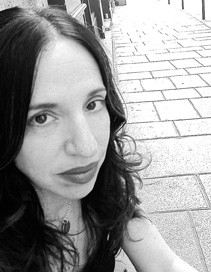Susan Steinberg is the author of three short story collections in experimental prose: Spectacle, Hydroplane, and The End of Free Love. She took a short break from teaching English at the University of San Francisco to give a reading from her most recent collection, Spectacle, at the UA Poetry Center Thursday night. She visited an ‘Elements of Craft in Creative Writing Course’ before the reading to answer some of students’ and The Daily Wildcat’s questions.
DW: Did you always have a feeing that you would become a writer?
“No. I actually went to art school for painting. I was always a visual artist. But I’ve always kept notebooks and journals, and I’ve always loved writing. Sometimes during painting, I would take breaks to write.”
Student: Do you ever feel like you’re not really allowed to write in that [experimental] way?
“When I do it, I feel like there’s a reason I can justify it. Some of the stories have 400 semicolons in them – which I know you’re not supposed to do. But I wanted to use them correctly, according to the rules, and then I could justify it. But, I take a risk. It’s not the end of the world. You can try to put a comma somewhere, where it doesn’t belong – and see if it works. It’s always a risk, isn’t it? And being direct is a risk in art and in life. But sometimes that’s the best way to be.”
DW: Do you have a favorite spot to sit down and write, whether it’s a favorite out of comfort or inspiration?
“I’ve done some of my best writing at artist’s residencies – you meet a ton of writers and artists, that’s the best part of it. Well, the best part is having time to do your own work. Some of my favorites are Yaddo, MacDowell Colony, or the Vermont Studio Center. It’s a really beautiful way to shut out the world and just write.”
Student: Do you feel any pressure, with this book being out and acclaimed, of being tethered to that style when you’re writing your new book?
“I don’t feel tethered to it. Actually, if anything – the opposite. It’s just natural for me to write it in this way; I keep going back to it. I don’t use a lot of dialogue. I don’t plot…. I feel more the pressure from myself, not from the world, to sort of try something new all the time.”
Student: Do you draw the inspiration for your stories from your real life? Like the airplane crash story– is that something that happened to you and you’re then turning into fiction?
“That’s a tricky question. But I’m going to answer it. Because part of the reason I don’t answer it or haven’t been answering the question is that I’ve been afraid that people automatically think that women write nonfiction – it’s gotta be confessional, its gotta be nonfiction – they couldn’t have possibly imagined it. And So I fight against that. But I also think I’ve been really shy about talking about what’s real and what’s not. But the truth is, for that story, when I was in college – do you guys remember, there was a plane crash at Lockerbie – which was a big pan out explosion, and it was a terrorist thing. Anyways, two girls were in my college class on the plane, and it made me afraid to fly and afraid to hear planes for years and years. So I wrote about it. But, it didn’t happen quite that way. Yeah, it’s fiction.”









